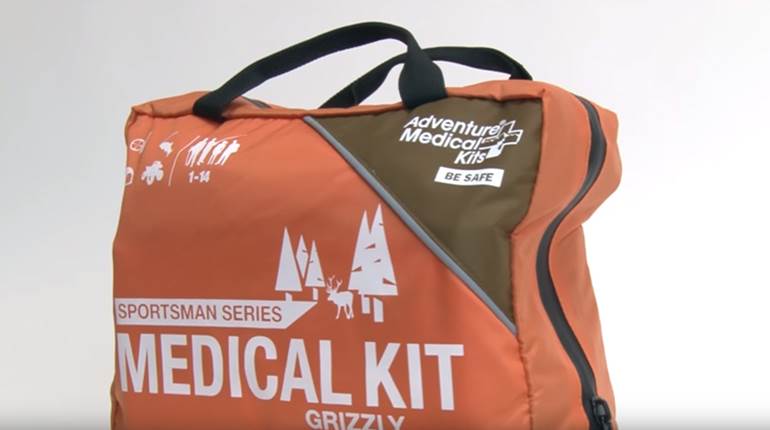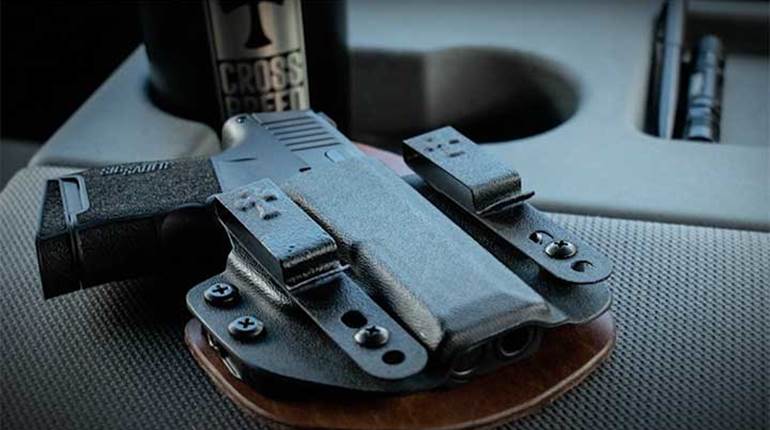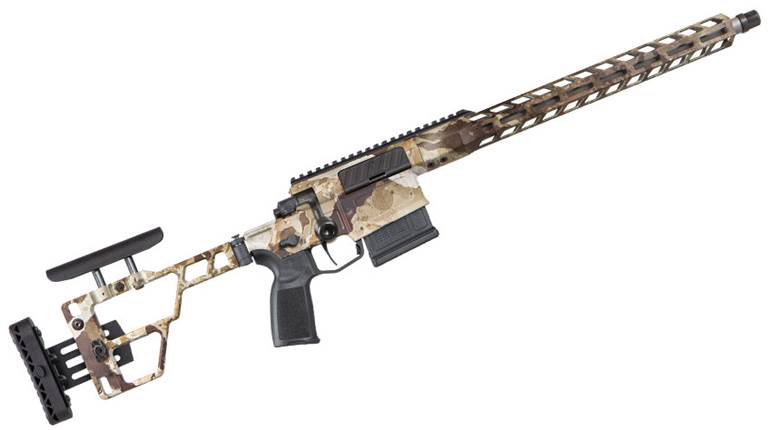
I’ve said it before and it bears repeating: Optics-equipped pistols are the future. Mounted on a pistol, a red-dot optic reduces the number of sights and focal planes a shooter needs to manage, and it facilitates accuracy at extended ranges thanks to the fine aiming point provided by its reticle. By understanding how they work, and investing in a set of co-witnessing iron sights, shooters can realize the advantages of using a pistol-mounted optic, while mitigating the perceived drawbacks. For those ready to make the leap from irons to red-dots, follow along as I look at pistols that come optics-ready from the factory as well as options for retrofitting a non-red-dot pistol, and assembling a new gun from parts.
A couple of disclaimers are in order. First, the examples I’m using in this article are all Glocks (us.glock.com) or Glock-based analogs. My justification is that Glocks are popular, widely owned, widely available and offered from the factory in optics-ready MOS (Modular Optic System) configurations. Glock’s ubiquity means its products will be familiar to most readers, and the prevalence and accessibility of its products will allow readers to follow along and replicate these assemblies if they desire. Glock products also enjoy unrivaled aftermarket support, particularly with regard to red-dot optics, meaning there are lots of parts available and lots of options for customization—the fact that Glock-based firearms can be assembled using virtually no Glock factory parts is telling. Many, if not most, pistol manufacturers are embracing red-dots through excellent offerings of their own. But for those shooters just starting to explore the category, I believe a Glock offers the best point of entry.
My second disclaimer is that I’ve used only Trijicon optics (trijicon.com) in this article, and for similar reasons as those stated above. Trijicon’s RMR and SRO red-dots have great reputations for quality, and they should be familiar, and available, for most readers. And, like the Glocks, the Trijicon RMR mounting pattern—also used by the SRO—is the most widely available option when it comes to aftermarket components. There are many other excellent red-dot offerings on the market—some significantly less expensive than the RMR or SRO—but for the purpose of this article, the Trijicons are the easiest optics to configure a pistol around.

Purchase
The quickest way to get a pistol that is red-dot-ready is to buy a factory model that comes with a pre-cut, finished slide. Be aware though, there is a mark-up—sometimes significant—for the convenience. The example I’ve used is a Glock 19 Gen5 MOS ($745), and the pistol comes from the factory with a cut slide and a series of adaptor plates to accommodate several styles of red-dot optics. With such a gun, all that is necessary is the optic of choice, mounting screws—usually included with the gun or the optic, or both—and, if desired, a new set of iron sights that are tall enough to be seen through the viewing lens of the optic.
I think co-witnessing iron sights are a worthwhile upgrade simply because bad things tend to happen at inopportune times. If my red-dot battery dies when I need it most, I want the irons to be visible so that I can still stand and deliver. Extra-tall iron sights come in a wide range of configurations, from all-black units to fiber-optic and tritium-illuminated sets, and prices can range from $40 to $140 or more, depending on the features and brand. One tip when looking for co-witnessing irons, search for “suppressor height sights.” It’s the common name for tall sights, and if they are tall enough to be used over a suppressor, they are tall enough to be seen through a pistol-mounted optic.
In my example, I’ve added a Trijicon RMR to the Glock. I also procured a set of Ameriglo tall, flat-black target sights, model GL-429 ($48, bigtexoutdoors.com). Installation of iron sights can be accomplished at home, and there are a number of tools and devices designed to ease the process. But, if you have any concerns or questions—with sights or any other firearm-related installations and assemblies—seek out the advice of your local gunsmith. Small jobs like installing iron sights can usually be done quickly and expertly for a nominal fee.

Retrofit
If you consider the price of a gun already owned as a sunk cost, the least expensive way to a red-dot-ready pistol may be a retrofit. Two ways to retrofit a pistol for use with optics include sending the gun to a custom shop for slide machining and refinishing, or purchasing an aftermarket optics-ready slide. The custom shop route can offer customers anything from a basic slide cut to intricate machining and personalized finishes, and the prices vary based on the shop, firearm model and services selected. Aftermarket slides are often less expensive, and usually include durable metal finishes such as nitriding or another chemical treatment. Users need to be sure, though, that a new slide will be compatible with the existing frame (make, model, chambering, generation, etc.). Frankly, outside of 9 mm Glocks, pickings are pretty slim for aftermarket slides.
For my retrofit example, I decided to build out a new slide assembly for my Gen4 G19. To start, I ordered a Glock Gen4, 9 mm, RMR-cut slide from Brownells ($200, brownells.com). Now, if I wanted to get red-dot-ready with the least investment, this is all I would need besides the sight itself—in this case, a Trijicon SRO. With the Brownell’s slide, I could simply transfer over all of the slide assembly small parts, mount the optic and be on my way. That’s not a bad option for the budget-minded, and supplemental parts, such as tall sights, could be added down the line. One note if you take this route: Mind the Glock’s firing pin channel liner. It’s a polymer pipe that keeps the firing pin assembly from rubbing against the metal of the slide. Most people don’t even know it’s there, and it’s not easy to remove, so you may need to purchase a new one for the new slide. Big Tex Outdoors is a great source for Glock parts and accessories, and the company has the Glock OEM Firing Pin Channel Liner (SP01148) listed for $3.50.
For my gun, I opted to leave my original slide intact, and to build out the new slide completely. For the internals, I turned again to Big Tex Outdoors for a Glock OEM Slide Parts Package 9mm (GSP-001) with a Gen4 G19 recoil spring assembly ($106). I also decided to add a Wilson Combat Match Grade Barrel with a stainless finish ($150, wilsoncombat.com) and Wilson Combat’s Tall Snag-Free sights that include a green fiber-optic front and a serrated, U-notch rear. At writing, the sights aren’t sold a la carte, but are available to customers who send their Glocks in for slide work. Wilson Combat has parlayed its expertise in performance M1911s to the Glock aftermarket with aplomb, and the company is a great source for match-grade components and even full custom builds.
You’ll notice that as parts are added the price quickly increases. Keep that in mind whether you retrofit at home, or send a slide out for custom work.

Assemble
A third method for getting into a red-dot-ready pistol is to build one from parts. In this arena, only the Glock and M1911 platforms really come to mind as having an aftermarket capable of supporting full assemblies. This route is for the tinkerer, the enthusiast and the shooter who wants to personalize his or her pistol—it is not an exercise in cost savings or convenience.
For my build, I chose to pair a Nomad 9 frame with a Rival Arms slide assembly. The Nomad 9 from Nomad Defense (nomaddefenseco.com) is an excellent Glock-based frame for shooters who aren’t satisfied with the ergonomics of a stock Glock pistol. From the texturing, to the shape of the grip, and subtle features such as the extended beavertail and forward thumb ledges, the Nomad 9 frame re-interprets Glock’s ergonomics and aesthetics. The frame is available through Rainier Arms ($200, rainierarms.com), and although the Nomad 9 does not include internal frame components, don’t mistake it for an 80 percent component—it is a serialized “firearm” and must be transferred through an FFL. The Nomad 9 frame is designed for use with Glock Gen4 components, so I used a Glock OEM Frame Parts Package, including an OEM trigger, for a Gen4 Glock 19 ($83, Big Tex Outdoors).

The upper assembly is completely comprised of meticulously machined components from Rival Arms (rival-arms.com). The slide itself is the Precision Upgrade Glock 19 RMR model ($471) that, besides being cut for a Trijicon optic, features forward serrations and lightening cuts. Easily seen through the machined windows is the bronze Precision Drop-In Glock 19 Standard barrel ($212). The small parts are also from Rival Arms, cataloged as the Glock Slide Completion Kit ($142), and the company also sells a stainless steel guide rod/recoil spring assembly ($50). As you’d expect from components that command premium prices, I’ve found that Rival Arms’ offerings not only look good, they are designed to perform.
Finally, topping the slide and completing the build is Trijicon’s SRO red-dot sight, as well as Trijicon’s suppressor-height Bright & Tough Night Sight set ($145). The iron sights feature a white-outline, tritium-powered front and a black rear sight that also has two tritium lamps. In low-light conditions, the sights provide an illuminated, three-dot sight picture.
So, whether you are in the market for an optics-ready pistol, or looking for ways to do it yourself, I hope this primer has given you some ideas and insights about getting red-dot-ready, and entering the world of pistol-mounted optics. Welcome to the future.






































